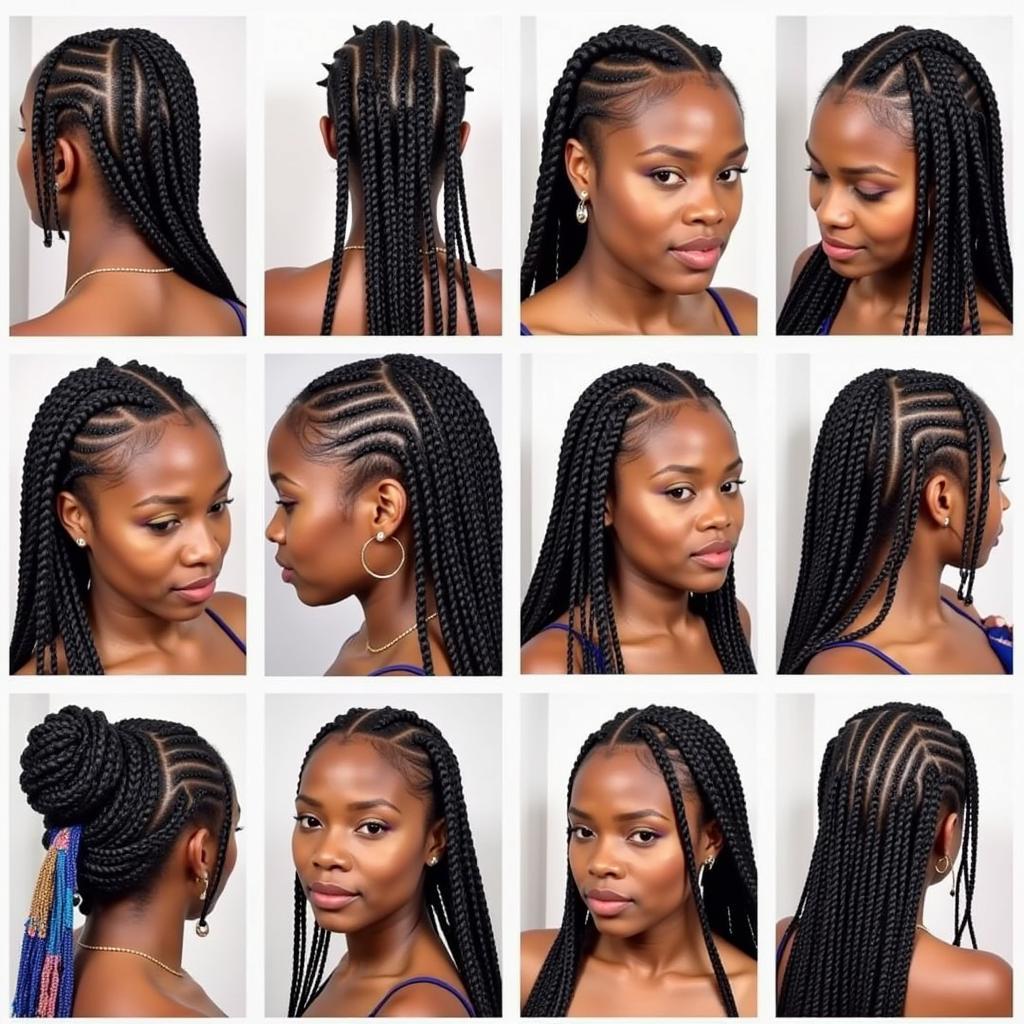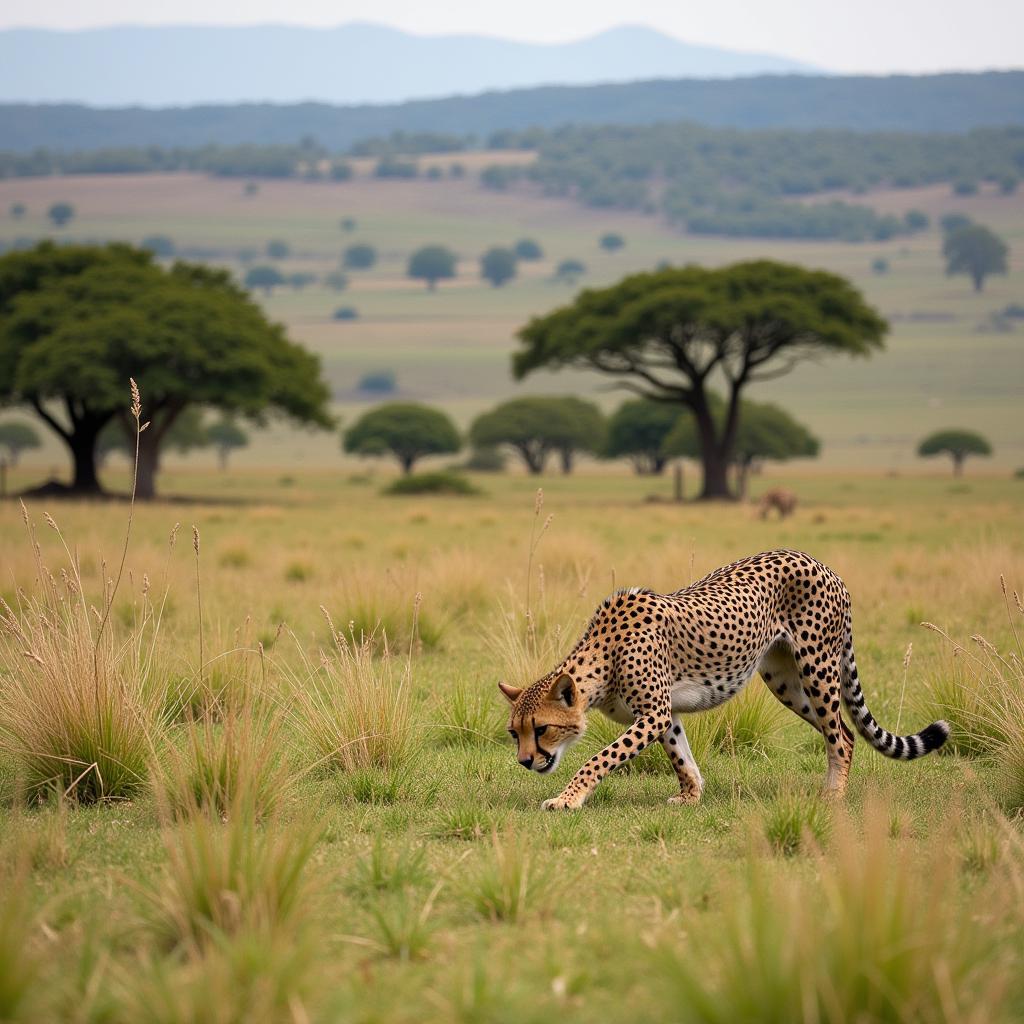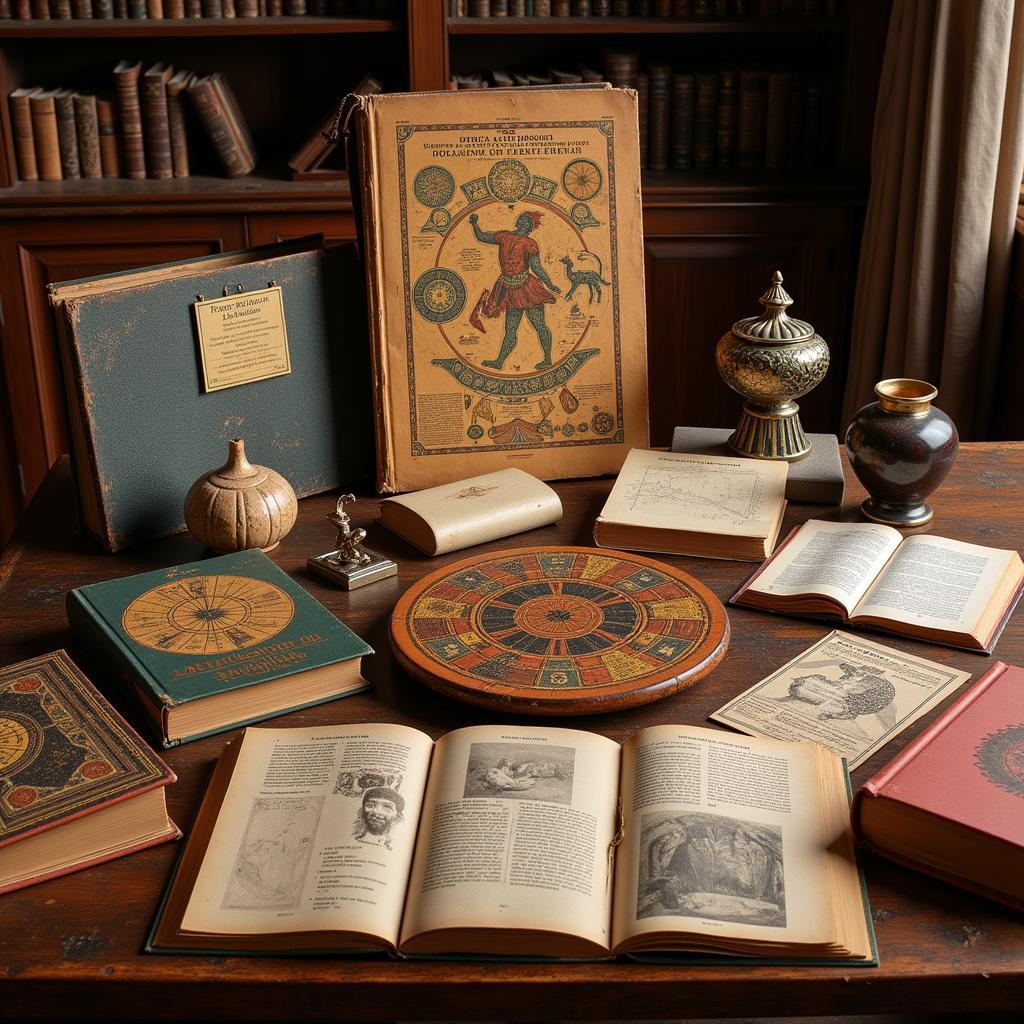African Hair Threading: A Deep Dive into Ghana Plaits
African hair threading, particularly Ghana plaits, represents more than just a hairstyle. It’s a rich tapestry of culture, tradition, and artistry passed down through generations. From its practical origins to its modern interpretations, threading offers a unique lens through which to explore African heritage. This article delves into the fascinating world of Ghana plaits, exploring their history, techniques, and cultural significance.
Unraveling the History of African Hair Threading
For centuries, African hair threading has served a multifaceted purpose. Beyond aesthetics, it was a practical solution for managing thick, textured hair in hot climates. The tightly woven strands kept hair neat, protected it from the sun, and minimized breakage. Threading also served as a marker of social status, ethnicity, and even marital status within various communities. Different regions across the continent developed unique threading styles, each telling a story of its own.
Different materials have been historically used for threading, ranging from cotton and wool to silk and even human hair. These materials influenced the texture, durability, and overall look of the threaded hairstyles.
Ghana Plaits: An Emblem of West African Beauty
Ghana plaits, also known as cornrows or Cherokee braids in other cultures, are a distinctive style originating from West Africa, particularly Ghana. They are characterized by raised, tightly woven braids that lie close to the scalp, creating intricate patterns. The technique involves gradually adding hair to each braid as it’s woven, resulting in a thicker, more defined look. Ghana plaits are incredibly versatile, adaptable to various hair lengths and textures, and can be styled in countless creative ways.
Ghana plaits are not merely a hairstyle; they are a symbol of cultural pride and heritage. They are often adorned with beads, shells, and other decorative elements that further enhance their beauty and cultural significance.
Mastering the Art of African Hair Threading: Techniques and Tools
Threading requires skill and patience. Traditionally, it was a communal activity, with mothers and grandmothers passing down the techniques to younger generations. The process involves carefully sectioning the hair and intricately weaving the thread around each section to create the desired pattern. While the traditional method uses only thread and skillful hands, modern techniques may incorporate tools like braiding needles and specialized combs.
Today, numerous salons and stylists specialize in African hair threading, offering a wide range of styles and designs to cater to individual preferences. Learning to thread hair oneself, however, remains a valuable skill and a way to connect with cultural heritage.
 Ghana Plaits: Different Styles and Designs
Ghana Plaits: Different Styles and Designs
Caring for Your Ghana Plaits: Tips and Tricks
Maintaining Ghana plaits requires proper care to ensure their longevity and keep your hair healthy. Regular moisturizing is crucial to prevent dryness and breakage. Protective styles like wrapping the hair in a silk scarf at night can minimize friction and maintain the neatness of the braids. Avoiding harsh chemicals and excessive manipulation also helps to protect the hair and scalp.
Proper care not only extends the life of your Ghana plaits but also promotes healthy hair growth. Consulting with a hair care professional specializing in African hair can provide personalized advice and product recommendations.
Are Ghana plaits protective?
Yes, Ghana plaits are considered a protective hairstyle as they keep your hair tucked away, minimizing exposure to environmental stressors and reducing manipulation that can lead to breakage.
How long do Ghana plaits last?
With proper care, Ghana plaits can last for several weeks, typically between 2 to 8 weeks depending on hair type, growth rate, and maintenance.
Conclusion: Embracing the Legacy of African Hair Threading Ghana Plaits
African hair threading, exemplified by Ghana plaits, is more than just a hairstyle; it’s a living testament to African creativity, cultural heritage, and the enduring power of tradition. From its practical origins to its contemporary expressions, threading continues to evolve, reflecting the dynamism of African culture. By embracing and celebrating these traditions, we keep a rich heritage alive and ensure its continued legacy for generations to come.
FAQ:
-
What is the difference between Ghana plaits and regular cornrows? Ghana plaits are a type of cornrow characterized by the gradual addition of hair extensions or natural hair to create a raised, thicker braid.
-
How long does it take to get Ghana plaits done? The time required depends on the complexity and size of the braids, but it typically takes anywhere from a few hours to a full day.
-
Can I wash my hair with Ghana plaits? Yes, you can wash your hair with Ghana plaits, but it’s important to use the right techniques and products to avoid frizz and loosening the braids.
-
How do I prevent my Ghana plaits from itching? Regular moisturizing and avoiding tight braiding can help prevent itching.
-
Are Ghana plaits suitable for all hair types? While Ghana plaits are generally adaptable to various hair textures, it’s best to consult with a stylist to determine the most suitable style for your hair type.
-
What are some popular variations of Ghana plaits? Popular variations include straight-back cornrows, zigzag patterns, and intricate designs incorporating beads and other accessories.
-
How can I learn to do Ghana plaits myself? Numerous online tutorials and resources are available, or you can consider taking a braiding class from a professional stylist.
Common Scenarios:
Scenario 1: You’re attending a wedding and want a sophisticated hairstyle. Ghana plaits offer a stunning and elegant option that can be styled to complement your outfit and personal taste.
Scenario 2: You’re going on vacation to a hot and humid climate. Ghana plaits are a practical choice as they keep your hair neat, protected, and manageable in challenging weather conditions.
Scenario 3: You want to embrace your natural hair texture and celebrate your African heritage. Ghana plaits are a beautiful and meaningful way to express your cultural identity.
Related Articles:
- The History of African Hairstyles
- Caring for Natural Hair
- Protective Hairstyles for Black Women
Contact us for support: Phone: +255768904061, Email: kaka.mag@gmail.com or visit us at Mbarali DC Mawindi, Kangaga, Tanzania. We have a 24/7 customer service team.


